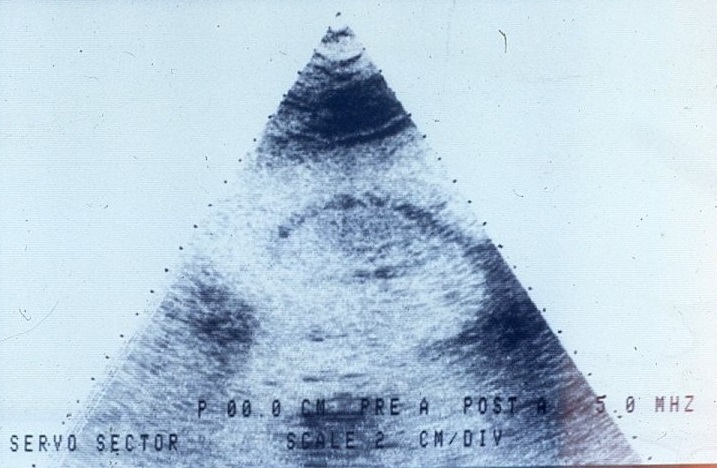I’ve declared the third week of July as National Health Care Stupidity Week, for I’ve never encountered such high levels before.
I saw an ophthalmologist for a problem with my left upper eyelid at the beginning of July and scheduled surgery for three weeks later. We asked the scheduler how much the procedure would cost but she said, “It depends.” That’s not much of an answer to a physician who understands the vagaries of CPT coding and insurance reimbursement. You give the insurance company the codes and your charges. The insurance company laughs their asses off and then tell you “No fucking way. THIS is what we’ll reimburse you.”
The scheduler said, “I’ll ask the doctor what he plans on doing and I’ll call you in two days with the charges.”
I can understand if the physician wasn’t quite sure what he was going to be doing right after seeing me, so we let it go.
The week’s aggravation started at Drugs ‘R’ Us, a national chain, which the threat of litigation prevents me from identifying. I’ve used a maintenance inhaler for life-long asthma, for which there is NO generic. The price has climbed from a $150 insurance copay for a three-month supply from a parasitic mail-order pharmacy benefit manager to $400 for one and NO insurance coverage until (my very high) deductible is met. I brought this up to my pulmonologist last month and asked for a little-known generic equivalent (different medications but should have the same therapeutic benefit).
He said, “Well, Thieving Bastards Pharmaceuticals have this discount card that will give it to you for free if you have insurance. It’s good until December 2018.”
I learned a long time ago there ain’t no free lunch, but if they are willing to part with it for free, I’m in. I took it to Drugs ‘R’ Us and, after 20 minutes or so of fighting with the computer, I got my inhaler. ONE inhaler. I have to go back every month for this charade.
The pharmacy’s robot phone said I could pick up this month’s inhaler. However, the pharmacy tech brought me a bag with three inhalers and a bill for $935 “because you haven’t met your deductible.” No shit, Sherlock. I have insurance with a high deductible and a health savings account (HSA) which is great at a certain income level but completely useless if you’re making minimum wage (in which case you probably don’t have any insurance and you’re a drain on society, at least according to the bastards who’ve been trying to undo the ACA for the past 8 years).
“Last time I got one and it was free! Here’s the card and I’m NOT going to pay almost a thousand bucks for this. I’d rather die a quick and painless death.” (I’m using that phrase more often these days.)
“Well, let me change it but I have to run it through the system again. It’s going to take some time.”
Fine. I sat in one of the uncomfortable chairs in the pharmacy waiting area and perused the local paper, which didn’t help my mood any.
Then my phone rang.
“Hi, this is Brunhilda from the Pretentious Suburban Surgery Center. Your insurance is going to pay 80% of the procedure after you’ve met your deductible, but you haven’t met your deductible, so we want your left testicle ($1305) as a down payment.”
“First of all, why? Second, what is this going to cost me in total?”
“Well, we ask everyone for a down payment.”
No, you said it was because I hadn’t met my deductible but, please, proceed.
“Why? This isn’t a cosmetic procedure and I’ve already signed the boilerplate insurance assignment form that says I’m responsible for the remainder. So, again, what is this going to cost me?”
“We can’t tell you what we charge, and the insurance company won’t let us tell you what they will pay us.”
“Why not?”
“It’s in our contract.”
“You’d tell me if I was paying for all of this out of pocket, wouldn’t you?”
Silence
“Well, my financial adviser has told me that’s not a great idea. I’ve got an HSA funded with pretax dollars and if I overpay you and you then reimburse me directly, I might run afoul of the IRS, which is not known for being gracious. Would you be willing to talk with her as I have to leave town in a few minutes?” (Translation: “If I acquiesce to this extortion, Peg is going to ream me a new one. We’re going to play good cop/bad cop and I’ll let her ream you a new one. You really don’t want to poke this bear, but you’re gonna have to learn the hard way.”)
She says, “I’d be happy to!” and I hung up, snickering.
An older woman came to the pharmacy while I was waiting. She was bent over a wheeled walker, wheezing audibly as she shuffled up to the counter. I suspect she had long-standing COPD and it made my lungs hurt just to hear her breathe.
“They called me and told me my prescriptions were ready.”
“What’s the name?”
She wheezed her name.
“Your prescriptions have expired, and we put a call into your doctor’s office to get authorization for refills.”
“But someone called me and asked if I wanted all my prescriptions refilled. She even listed all of them and I said ‘yes!’ Then I got a phone call from you!”
“That is an automated system and we don’t have any control over it.”
This went on for several minutes with the poor woman protesting that she’d done everything she’d been told but slowly realized this trip had been for naught.
Finally, she sighed, said, “Well, what are you gonna do,” turned around and shuffled out. She was far more resigned than I ever would have been. ( is one of my all-time favorite revenge movies. Just sayin’.)
The pharmacist came out, handed my drug card back to me and said, “We put in a phone call to the company and we’re waiting to hear back. It shouldn’t be too long.”
Twenty minutes later I was still waiting. Finally, I got up and said, “I have to leave town. Can my wife pick this up?”
“That’s no problem. We’ll let her know when it’s ready.”
Then I asked her. “Is there a generic for this because the card expires in December and I can’t afford $400 a month for this.” I gave her the generic medication names.
“It looks like the only one is ‘Yerstillscrewed’ but insurance doesn’t cover it.”
“I KNOW that, but I can get a three-month supply using GoodRx for less than half of what one of the brand-name inhalers costs.”
It’s turns out that Thieving Bastards Pharmaceuticals changed the program so that it only covers that drug up to $200/month. You know, the drug for which they set the price at $400.
I left and started my drive to Springfield. I was just about at Joliet when the phone rang.
“This is Vinnie, the enforcer, uh, business manager from the doctor’s office. I wanted to let you know that your insurance is going to pay 80% of the procedure after your deductible is met, but you haven’t met your deductible, so we want your right testicle as a down payment.” (It’s been two weeks since the initial visit and less than a week before surgery.)
“Why?”
“It’s our policy.”
“I’ve had other procedures and visits, and no one has EVER asked for money up front. You just told me what my deductible is, and you know how much I’ve met, which means you also know I’ve been paying towards it. The surgeon’s fee and the surgery center charges are likely to eat up the rest of my deductible. Again, how much is this going to cost?”
“It depends.”
“What do you mean, ’it depends?’ That’s bullshit. There’s a CPT code for the procedure, and you have a charge for it. I know that because I’m a physician and I’ve had my own charge list. You’re going to give the insurance company a bill with a CPT code. They are going to send me an EOB (Explanation of Benefits) which will tell me what YOU charged, what they allow, what they’ve paid and what my obligation is. So, to pretend this is a deep, dark secret is disingenuous. The only thing that “depends” is how much the insurance company is going to pay you and your contract with them defines their reimbursement. So, to ask me for money up front is insulting. You’re making me sound like a deadbeat.”
“No, no, we do this with everyone.” (Where have I heard that before?)
“Yeah, well no one else has ever asked me for a deposit! No one asked for a deposit before my colonoscopy, or when I went to the ER for a doppler scan for lower leg pain. Look, at this point I’m ready to cancel the whole goddam surgery and find someone else!”
“No, no, no! I’ll talk to the doctor and let him know how you feel and you can discuss it with him.”
I called Peg, who spent the next three days dealing with the office, getting nowhere. Finally, she got a call from the new office manager, a far more reasonable person. They talked for a couple of hours about what appears to the patient to be a hostile approach to payment. It was both illuminating and infuriating.
High deductible health plans are sometimes several hundred dollars a month less expensive than plans with lower deductibles. Some high-deductible plans come with Health Savings Accounts (HSAs), a Republican wet dream Paul Ryan drags out as an alternative to the ACA. HSAs are funded with pre-tax dollars – a maximum of $3450 a year for singles and $6900 for families in 2018 – which can only be used for health care expenses, at least until the account holder reaches 65. Old goats like me (over 55) get to put away an extra $1000 per year in our HSAs. The plans still come with out-of-pocket maximums of $7,350 for singles and $14,400 for families.
This is a great idea if your income level allows you to part with a few hundred bucks a paycheck and you’ve got a tidy sum in your bank account. It sucks if you don’t have the income, the savings, or if you anticipate ongoing medical expenses.
Here’s the problem. Lower income people get high-deductible plans because the premiums are affordable, but they are at greater financial risk because they don’t have the savings to cover the deductible. They may avoid preventive care if they are unaware that most high-deductible plans cover it with no out-of-pocket costs, opting to take a chance they won’t develop a more serious (and costly) illness later. Because they often can’t afford the deductible, they are more likely to default on outstanding medical bills. Hospitals and physicians have caught on and now demand money up front.
Asking for a down payment would be far more palatable if it applied to everyone. It’s no different than a contractor asking for money up front for a pricey remodeling job. Pay some now, pay the rest when the job’s done. But framing it as something required only of people who haven’t met their deductible implies they are deadbeats and is insulting. Further, waiting until a few days before surgery to extort money is infuriating. It should all be explained up front when scheduling the surgery.
The logical solution is universal coverage, but Congress lacks the political will and there are too many people making waaaaay too much money off the current system.
Hang on, because it’s only going to get worse.







